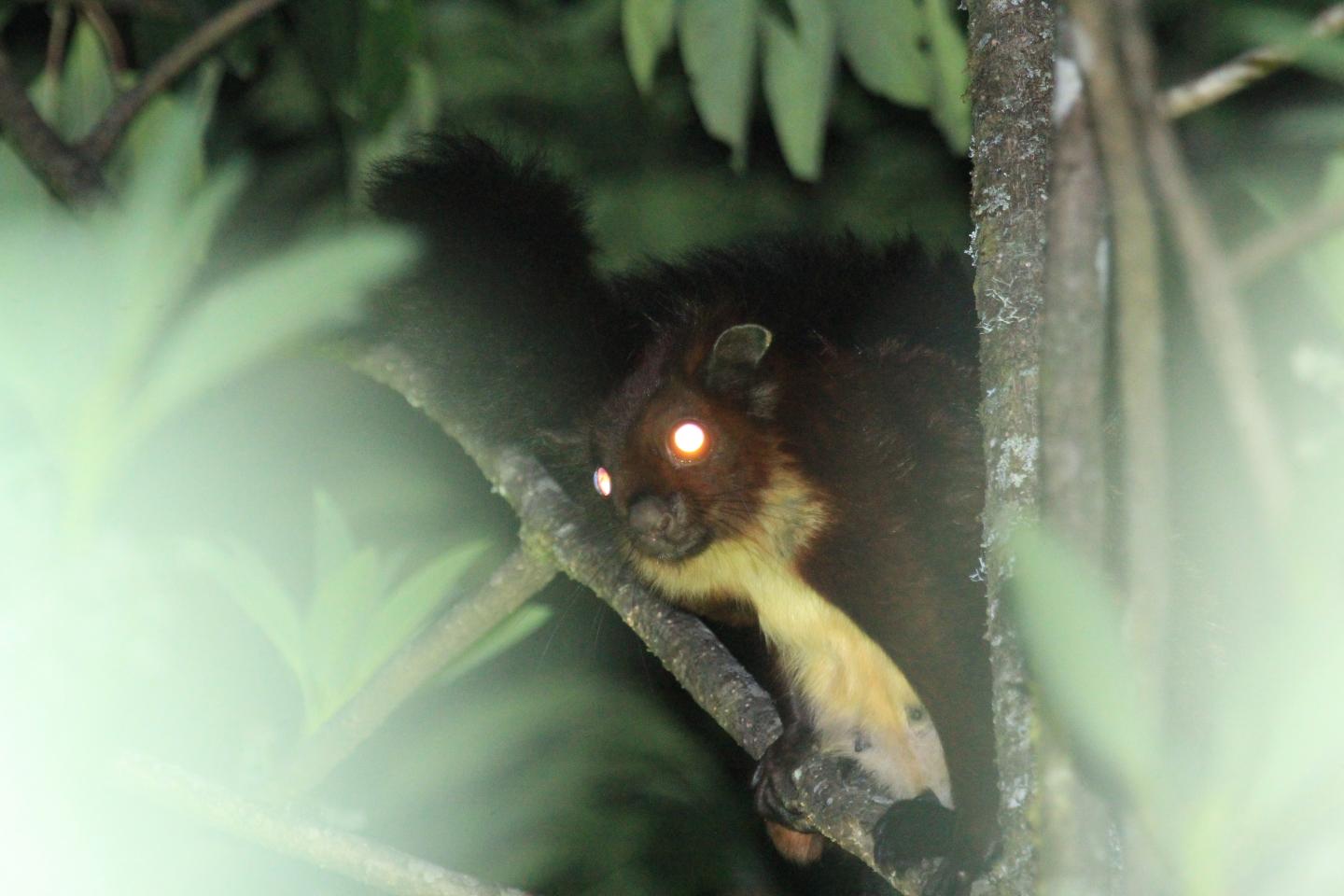
Credit: Kadoorie Farm & Botanic Garden
Described in 1981, the genus Biswamoyopterus is regarded as the most mysterious and rarest amongst all flying squirrels. It comprises two large (1.4-1.8 kg) species endemic to southern Asia: the Namdapha flying squirrel (India) and the Laotian giant flying squirrel (Lao PDR). Each is only known from a single specimen discovered in 1981 and 2013, respectively.
Recently, in 2018, a specimen identifiable as Biswamoyopterus was unexpectedly found in the collections of the Kunming Institute of Zoology (KIZ), Chinese Academy of Sciences by in-house expert Quan Li. It had been collected from Mount Gaoligong in Yunnan Province, Southwest China.
Initially, the individual was considered to belong to the “missing” Namdapha flying squirrel: a species considered as critically endangered due to hunting and habitat loss. The latter had not ever been recorded since its original description in 1981 and was already listed as one of the top 25 “most wanted” species in the world by the Global Wildlife Conservation.
However, a closer look at the specimen from KIZ made it clear that the squirrel exhibited a colouration, as well as skull and teeth anatomy, distinct from any of the previously known species in the genus.
Subsequently, joined by his colleagues from China (Xuelong Jiang, Xueyou Li, Fei Li, Ming Jiang, Wei Zhao and Wenyu Song) and Stephen Jackson from Australia, the team of Quan Li conducted a new field survey. Thus, they successfully obtained another specimen and, additionally, recorded observations of two other flying squirrels. As a result, they included a third member to the enigmatic genus: Biswamoyopterus gaoligongensis, also referred to as the Mount Gaoligong flying squirrel. This new to science species was described in a paper published in the open-access journal ZooKeys.
“The morphological features of B. gaoligongensis are closer to the critically endangered and missing Namdapha flying squirrel, but is still readily identifiable as a distinct species,” explains Quan Li.
“The new species was discovered in the ‘blank area’ spanning 1,250 km between the isolated habitats of the two known species, which suggests that the genus is much more widespread than previously thought. There is still hope for new Biswamoyopterus populations to be discovered in between or right next to the already known localities,” he says.
As for the conservation status of the newly described species, the researchers note that it inhabits low-altitude forests which are in close proximity to nearby human settlements. Thereby, they are vulnerable to anthropogenic threats, such as agricultural reclamation and poaching.
“Therefore, there is an urgent need to study the ecology, distribution, and conservation status of this rare and very beautiful genus,” concludes the lead author.
###
Original source:
Li Q, Li X-Y, Jackson SM, Li F, Jiang M, Zhao W, Song W-Y, Jiang X-Y (2019) Discovery and description of a mysterious Asian flying squirrel (Rodentia, Sciuridae, Biswamoyopterus) from Mount Gaoligong, southwest China. ZooKeys 864: 147-160. https:/
Additional Information:
The research is supported by National Key Research and Development Program of China (#2017YFC0505202) and the Yunnan University “Double First-Class” Construction Program (C176240107).
Media Contact
Mr. Quan Li
[email protected]
Related Journal Article
http://dx.




